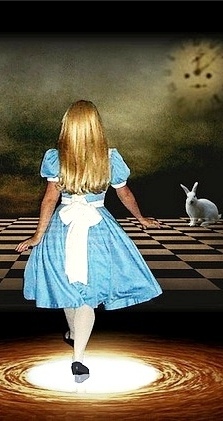 AS human beings our lives and fates are often wrapped up in multiple paradoxes, which seem to be almost the defining characteristic of our species.
AS human beings our lives and fates are often wrapped up in multiple paradoxes, which seem to be almost the defining characteristic of our species.
The fact that we mutually experience any contrasting states (or that we interact at all) is only made possible because we are connected together.
Similar to a cell phone conversation that depends on the signal between phones. Without that signal, the call gets dropped. But Nature’s signals are much more dependable.
In fact, according to Theosophy, the whole universe is signaled together via a built-in “triple evolutionary scheme,” (The Secret Doctrine 1:181) — “three separate schemes of evolution inextricably interwoven and interblended at every point.”
But does being indissolubly bound as one human family help us or hurt us? Probably both, depending on our self-development.
One moment we are compassionate and forgiving, the next we are weighted with irreconcilable differences and conflicts.
Similarly all beings on Earth are fundamentally entwined like a forest of giant redwoods that are known to have intermingling root systems. Universal non-separateness is the First Fundamental in Theosophy, insisting that “everything in the Universe, throughout all its kingdoms, is conscious,” according to H. P. Blavatsky in The Secret Doctrine (1:274).

Redwoods
Not limited to the human or animal kingdoms Blavatsky maintains, every unit visible or invisible in nature “is endowed with a consciousness of its own kind, and on its own plane of perception.” Scientists now have even connected minerals, linking “two diamonds in a mysterious process called entanglement,” LiveScience senior writer Clara Moskowitz reports —”normally only seen on the quantum scale.”
It phenomenon is so weird for modern science that Einstein dubbed it “spooky action at a distance.” Described as a strange effect where
“one object gets connected to another so that even if they are separated by large distances, an action performed on one will affect the other.”
“Thus, no speck of dust or grain of sand is without its own quality of consciousness,” according to Gertrude W. van Pelt in Hierarchies: The Ladder of Life, “though, of course, not as human beings understand the word. In this sense every atom is an entity.”

“Every composite being is composed of atoms,” she adds, “which obviously could not be used or respond to impulses if they were not themselves alive, having their own degree of consciousness.”
“If there were not this essential unity, there could be no coordination in nature, and any broken link would mean chaos.”
It has been found that the power of prescience lies ready to spring out from the core of even the simplest entities on earth, from atoms to molecules. Cells at disparate locations in our bodies, for example, will talk to one other. Trees are known to warn other trees of insect attacks over long distances reports seismologist Larry Gedney of Geophysical Institute, University of Alaska Fairbanks. (Do Trees Communicate for Mutual Defense?)

 THE surreal landscape of Lewis Carroll’s Through the Looking-Glass has Alice wondering what the world is like on the other side of a mirror.
THE surreal landscape of Lewis Carroll’s Through the Looking-Glass has Alice wondering what the world is like on the other side of a mirror.

 IN the surreal landscape of Lewis Carroll’s Through the Looking-Glass, Alice wonders what the world is like on the other side of a mirror.
IN the surreal landscape of Lewis Carroll’s Through the Looking-Glass, Alice wonders what the world is like on the other side of a mirror.


